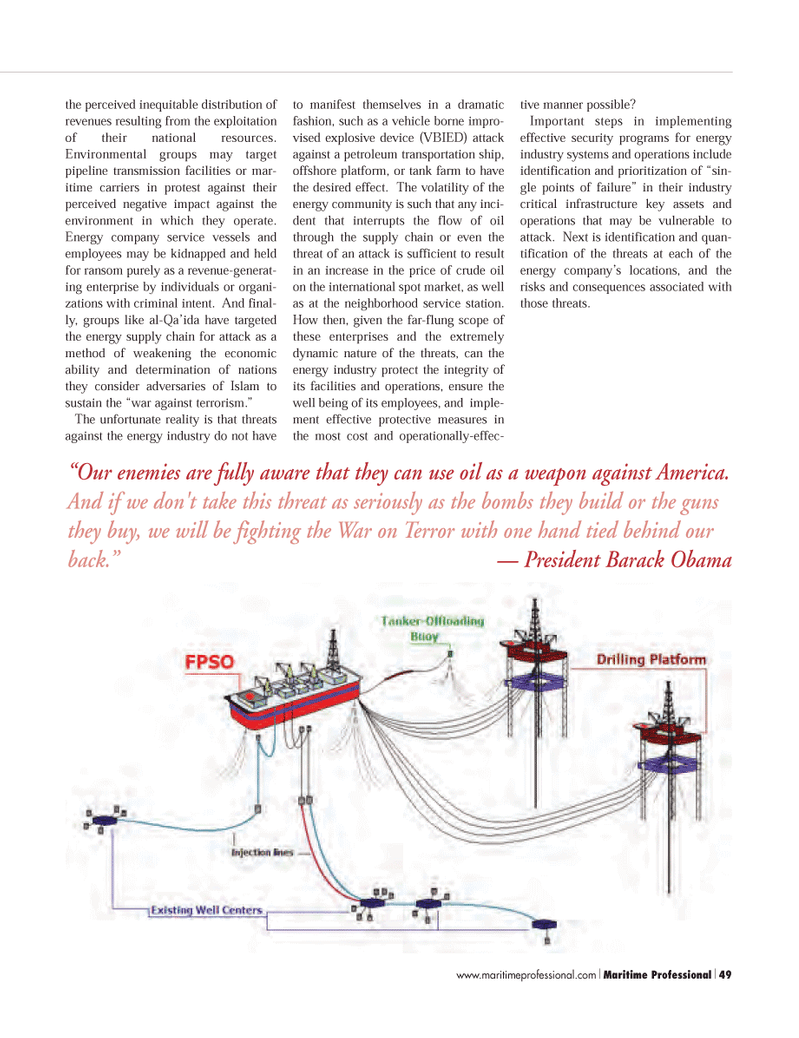
Page 49: of Maritime Logistics Professional Magazine (Q3 2011)
Maritime Security / Maritime Training & Education
Read this page in Pdf, Flash or Html5 edition of Q3 2011 Maritime Logistics Professional Magazine
www.maritimeprofessional.com Maritime Professional 49 the perceived inequitable distribution of revenues resulting from the exploitation of their national resources.Environmental groups may target pipeline transmission facilities or mar- itime carriers in protest against theirperceived negative impact against the environment in which they operate. Energy company service vessels and employees may be kidnapped and held for ransom purely as a revenue-generat- ing enterprise by individuals or organi- zations with criminal intent. And final- ly, groups like al-Qa?ida have targeted the energy supply chain for attack as a method of weakening the economic ability and determination of nationsthey consider adversaries of Islam to sustain the ?war against terrorism.? The unfortunate reality is that threatsagainst the energy industry do not have to manifest themselves in a dramatic fashion, such as a vehicle borne impro- vised explosive device (VBIED) attack against a petroleum transportation ship,offshore platform, or tank farm to have the desired effect. The volatility of the energy community is such that any inci- dent that interrupts the flow of oil through the supply chain or even the threat of an attack is sufficient to result in an increase in the price of crude oilon the international spot market, as well as at the neighborhood service station.How then, given the far-flung scope of these enterprises and the extremely dynamic nature of the threats, can theenergy industry protect the integrity of its facilities and operations, ensure the well being of its employees, and imple- ment effective protective measures in the most cost and operationally-effec- tive manner possible? Important steps in implementingeffective security programs for energy industry systems and operations includeidentification and prioritization of ?sin- gle points of failure? in their industry critical infrastructure key assets and operations that may be vulnerable toattack. Next is identification and quan- tification of the threats at each of the energy company?s locations, and the risks and consequences associated withthose threats. ?Our enemies are fully aware that they can use oil as a weapon against America. And if we don't take this threat as seriously as the bombs they build or the guns they buy, we will be fighting the War on Terror with one hand tied behind our back.? ? President Barack Obama MP #3 (34-49):MP Layouts 8/17/2011 4:32 PM Page 49

 48
48

 50
50
